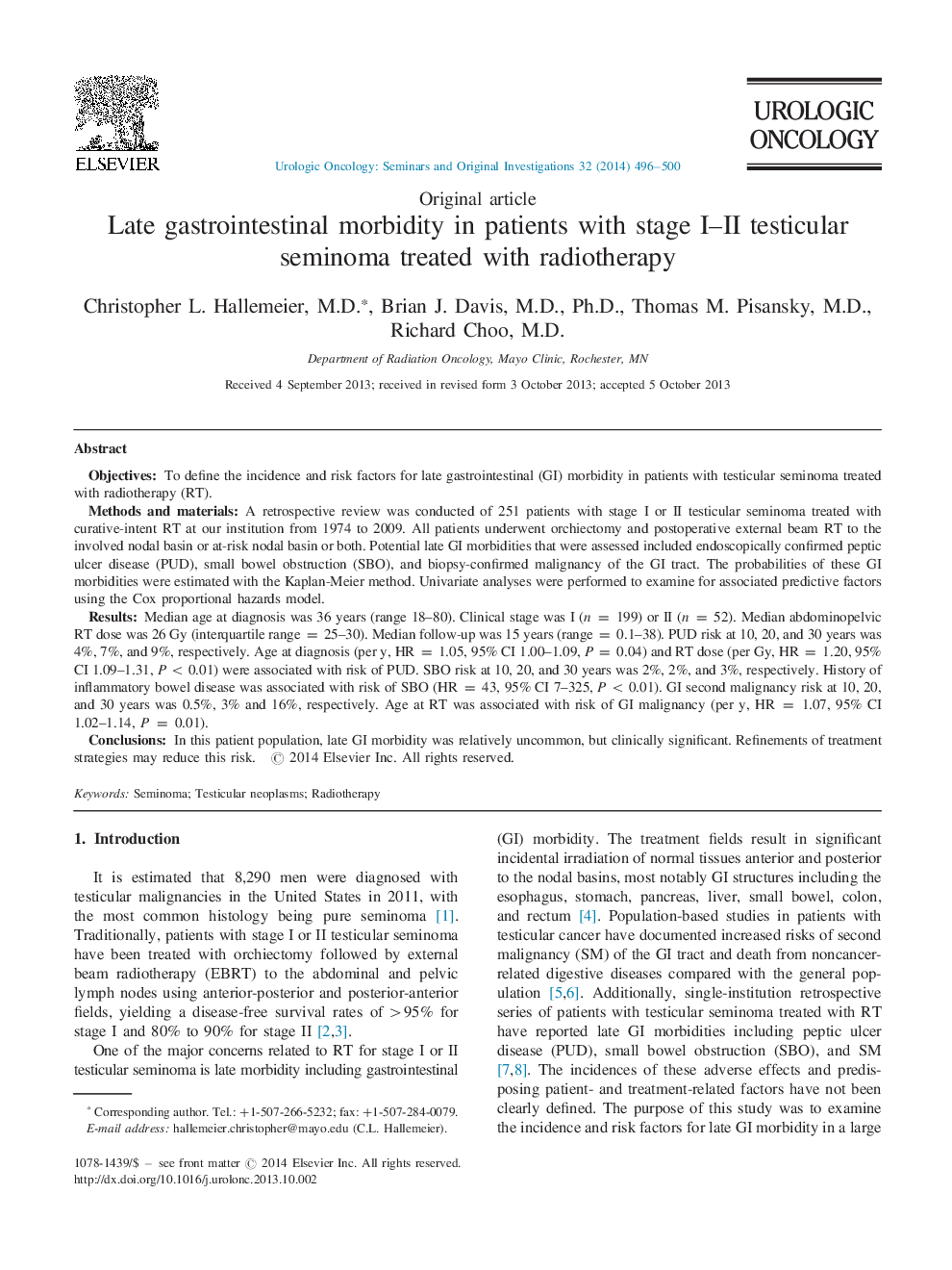| کد مقاله | کد نشریه | سال انتشار | مقاله انگلیسی | نسخه تمام متن |
|---|---|---|---|---|
| 6194184 | 1259354 | 2014 | 5 صفحه PDF | دانلود رایگان |

ObjectivesTo define the incidence and risk factors for late gastrointestinal (GI) morbidity in patients with testicular seminoma treated with radiotherapy (RT).Methods and materialsA retrospective review was conducted of 251 patients with stage I or II testicular seminoma treated with curative-intent RT at our institution from 1974 to 2009. All patients underwent orchiectomy and postoperative external beam RT to the involved nodal basin or at-risk nodal basin or both. Potential late GI morbidities that were assessed included endoscopically confirmed peptic ulcer disease (PUD), small bowel obstruction (SBO), and biopsy-confirmed malignancy of the GI tract. The probabilities of these GI morbidities were estimated with the Kaplan-Meier method. Univariate analyses were performed to examine for associated predictive factors using the Cox proportional hazards model.ResultsMedian age at diagnosis was 36 years (range 18-80). Clinical stage was I (n = 199) or II (n = 52). Median abdominopelvic RT dose was 26Â Gy (interquartile range = 25-30). Median follow-up was 15 years (range = 0.1-38). PUD risk at 10, 20, and 30 years was 4%, 7%, and 9%, respectively. Age at diagnosis (per y, HR = 1.05, 95% CI 1.00-1.09, P = 0.04) and RT dose (per Gy, HR = 1.20, 95% CI 1.09-1.31, P<0.01) were associated with risk of PUD. SBO risk at 10, 20, and 30 years was 2%, 2%, and 3%, respectively. History of inflammatory bowel disease was associated with risk of SBO (HR = 43, 95% CI 7-325, P<0.01). GI second malignancy risk at 10, 20, and 30 years was 0.5%, 3% and 16%, respectively. Age at RT was associated with risk of GI malignancy (per y, HR = 1.07, 95% CI 1.02-1.14, P = 0.01).ConclusionsIn this patient population, late GI morbidity was relatively uncommon, but clinically significant. Refinements of treatment strategies may reduce this risk.
Journal: Urologic Oncology: Seminars and Original Investigations - Volume 32, Issue 4, May 2014, Pages 496-500